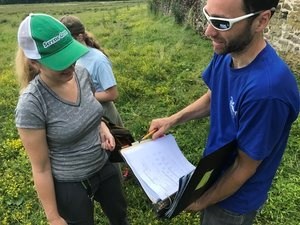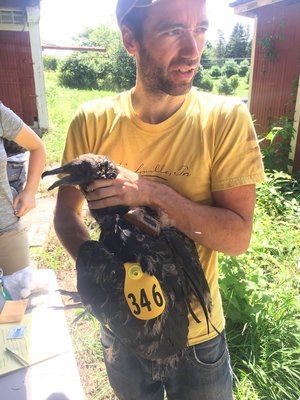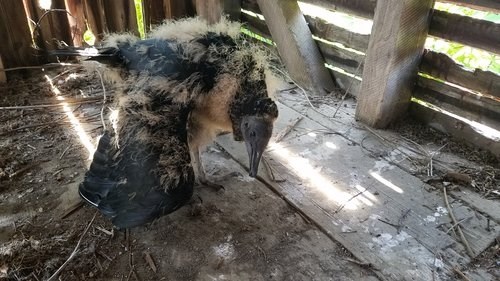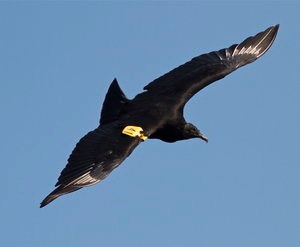Research Serendipity
Posted on in In the Field by JF Therrien, Senior Research Biologist

Hawk Mountain has a rich research and monitoring history. For several decades now, on-staff researchers have been carrying the torch, keeping numerous inestimable monitoring projects going. The migration counts conducted at Hawk Mountain indeed represents the longest running raptor monitoring prStarting some 80+ years ago, the counts were first designed to assess the usefulness of the protection offered by the newly created Sanctuary. Not long after, Hawk Mountain's curator Maurice Broun and others realized the invaluable long-term dataset that those counts represent and they could be used to study population trends of 16 North American raptor species. Then in the mid 1950s, Alex Nagy, then Hawk Mountain's assistant curator, installed a few bird boxes on his farm to see if he could get American kestrels to use them. What most likely started as a humble backyard experiment resulted in what is now the American Kestrel Nest Box Program, which will proudly celebrate its 65th anniversary next spring.
Research and monitoring projects sometimes begin after a carefully designed approach. However, in reality, many such projects simply start serendipitously, as in the previous examples. Traveling around Hawk Mountain to visit the 125 man-made nest boxes of the American Kestrel Nest Box Program during summer 2017, we noticed odd and conspicuous behaviors of bigger, darker birds. Indeed on distinct occasions, black vultures would suddenly appear flying low overhead or even flying out a window from the very barns our kestrel nest boxes are attached to. At that point, we had little doubt; those vultures are likely using the building to nest.oject in the world.

From a research point of view, having access to nest sites is highly valuable. In addition to being able to handle adults and chicks to assess their life history traits (body condition, growth rate, disease prevalence, etc.), monitoring nesting activities allows us to assess breeding success and breeding rate, age at first breeding, and nest site fidelity on the population level over time. Those aspects are all immensely important to understand the complete cycle of individuals that compose populations.
Finding this access to several nests for any raptor species is challenging, because individuals are often territorial. Their nests occur at low density and are usually concealed. Therefore, monitoring nesting raptors often becomes an unrealistic task, given the time required and the area that would need to be covered to locate a fair number of them. A good breeding monitoring project requires a relatively easy way to access several nests across a relatively small area to allow researchers to visit them periodically.

During summer 2017, our team found just this. We were able to successfully monitor 3 black vulture nests that we found without even searching while checking our kestrel nest boxes. Those birds were using Pennsylvanian barns just like giant man-made nest boxes, and thankfully they were all in a relatively small radius around Hawk Mountain.
This project has just begun, and we are now looking to double or triple the number of monitored nests in the coming years. So if you notice black or Turkey vultures flying out of abandoned buildings or barns, please let us know. We would be thrilled to add new nest locations to our newly-born monitoring program.

By using individual markers (such as wing-tags and telemetry transmitters), we will be following the where and wherefore of those individual birds through their lifetime. Anytime you see a vulture, keep an eye out for wing-tags (a brightly colored tag showing a distinct number). Any sighting of a tagged individual represents important information for locating roost sites, feeding hot spots, survival rates, and dispersal behavior. Help and support these studies by reporting any sightings at this link.
Monitoring programs such as these are an essential part of conservation science: they form the backbone of long-term population assessments. They allow researchers to keep track of historical population size and productivity in order to identify declines in a timely fashion and become aware of problems that otherwise could have gone undetected.
To learn more about our work with North American vultures or any other species of raptors, or if you wish to support our monitoring efforts financially, contact me at [email protected].